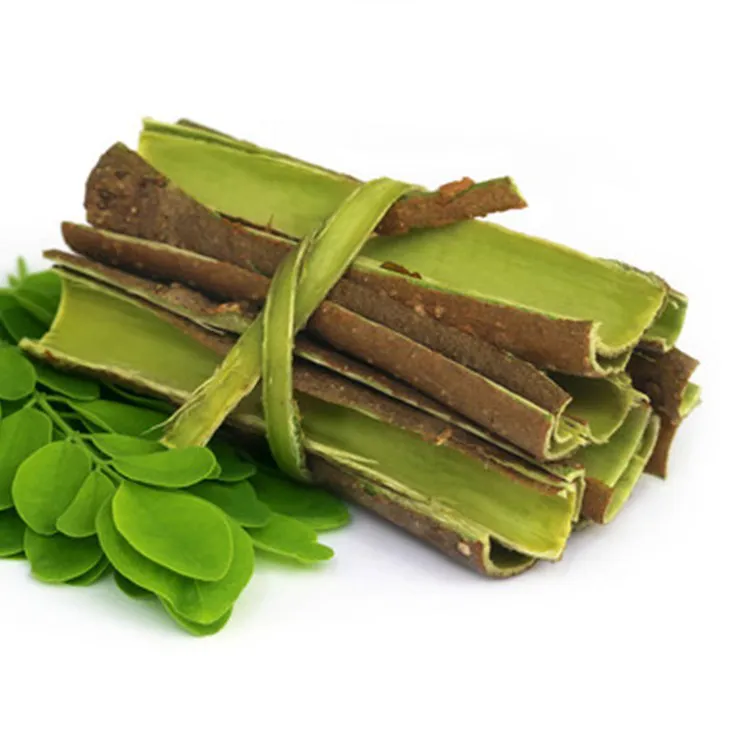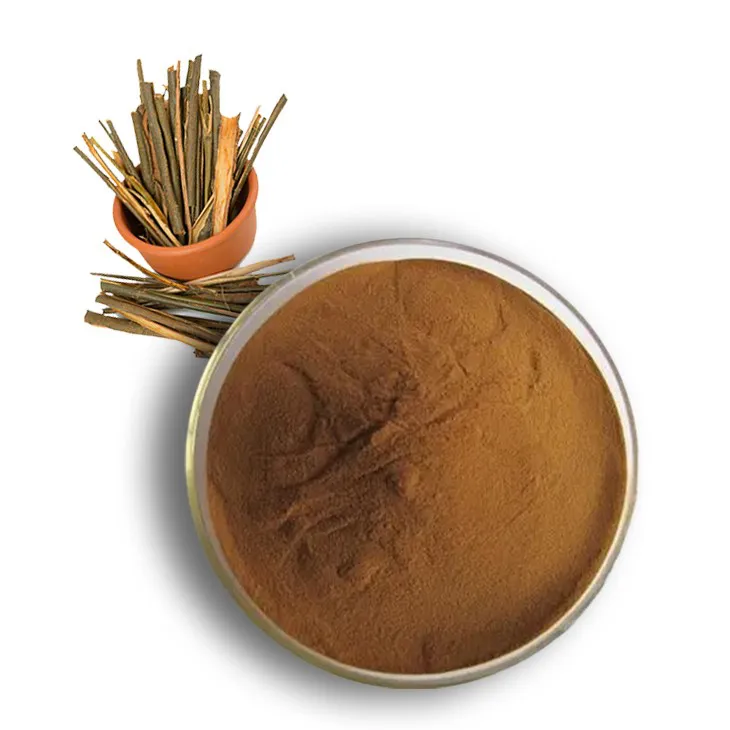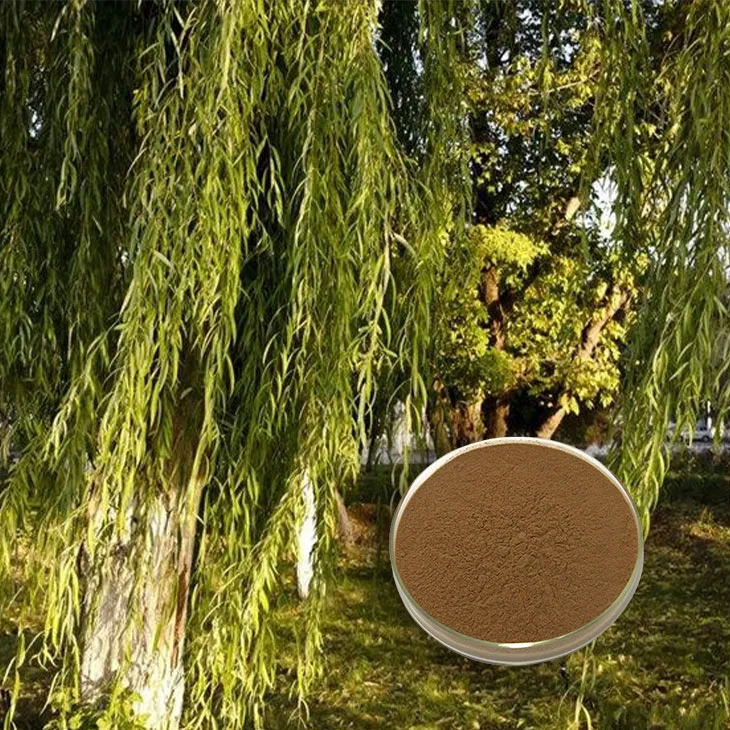- 0086-571-85302990
- sales@greenskybio.com
Active components in white willow bark extract.
2024-11-29

Introduction
White Willow Bark Extract has been used for centuries in traditional medicine. It contains several active components that contribute to its various beneficial effects on health. Understanding these active constituents is crucial for both its traditional and modern applications.

Salicin: A Prominent Analgesic and Anti - Inflammatory Agent
Salicin is one of the most well - studied components in White Willow Bark Extract. It is known for its significant analgesic (pain - relieving) and anti - inflammatory properties.
Natural Alternative to Synthetic Drugs
With the growing interest in natural remedies, salicin has been explored as a natural alternative to synthetic drugs. Synthetic drugs often come with side effects, and many people are seeking more natural options for pain management and inflammation reduction. Salicin offers a promising alternative in this regard.
Research has shown that salicin works by inhibiting the production of certain pro - inflammatory mediators in the body. For example, it can reduce the levels of cyclooxygenase - 2 (COX - 2), an enzyme that is involved in the production of prostaglandins, which are key players in the inflammatory process. By reducing the production of these inflammatory mediators, salicin helps to relieve pain and reduce inflammation.
Mechanism of Action
Once ingested, salicin is metabolized in the body. It is converted into salicylic acid, which is the active form that exerts its pharmacological effects. Salicylic acid has been shown to interfere with the normal function of cells involved in the inflammatory response. It can also affect the nervous system in a way that reduces the perception of pain.

Tannins: Astringent Properties for Skin - Related Applications
Tannins are another important component of White Willow Bark Extract. These compounds are characterized by their astringent properties.
Benefits for the Skin
In skin - related applications, tannins can have several beneficial effects. For example, they can help to tighten the skin and reduce the appearance of pores. This is because tannins can interact with proteins in the skin, causing them to contract. As a result, the skin appears smoother and more refined.
Tannins also have antioxidant properties, which can protect the skin from damage caused by free radicals. Free radicals are unstable molecules that can cause oxidative stress in the skin, leading to premature aging, wrinkles, and other skin problems. By scavenging free radicals, tannins can help to maintain the health and youthful appearance of the skin.
Interaction with Other Skin Components
Tannins can also interact with other components in the skin, such as collagen and elastin. Collagen and elastin are important proteins that provide structure and elasticity to the skin. Tannins can help to preserve the integrity of these proteins, preventing their degradation and maintaining the skin's firmness and elasticity.

Glycosides: Enhancing Physiological Functions
The glycosides present in white willow bark extract play an important role in enhancing the body's physiological functions.
Improving Digestion
Some glycosides in the extract may have a positive impact on digestion. They can stimulate the secretion of digestive enzymes, which are necessary for breaking down food and absorbing nutrients. By promoting the production of digestive enzymes, glycosides can help to improve digestion and prevent digestive problems such as indigestion and constipation.
For example, certain glycosides may interact with cells in the gastrointestinal tract to enhance the secretion of amylase, an enzyme that breaks down carbohydrates, or lipase, an enzyme that breaks down fats. This can lead to more efficient digestion and better nutrient absorption.
Modulating the Immune System
Other glycosides in the white willow bark extract may be involved in modulating the immune system. The immune system is a complex network of cells and molecules that defends the body against foreign invaders such as bacteria, viruses, and other pathogens.
Glycosides can influence the activity of immune cells, such as lymphocytes and macrophages. They can either enhance or suppress the immune response, depending on the specific glycoside and the physiological state of the body. For example, some glycosides may stimulate the production of cytokines, which are signaling molecules that regulate the immune response, while others may inhibit the over - activation of the immune system to prevent autoimmune diseases.

Other Active Components and Their Potential Effects
Besides salicin, tannins, and glycosides, white willow bark extract may contain other active components that also contribute to its overall effects.
- Flavonoids: These are a class of compounds with antioxidant and anti - inflammatory properties. Flavonoids in white willow bark extract may work in concert with salicin and tannins to enhance the anti - inflammatory and antioxidant effects of the extract.
- Phenolic acids: Phenolic acids can also have antioxidant and anti - inflammatory activities. They may play a role in protecting cells from oxidative damage and reducing inflammation in the body.
Conclusion
White willow bark extract contains a variety of active components, each with its own unique properties and potential health benefits. Salicin is a key component for analgesic and anti - inflammatory effects, tannins offer astringent and antioxidant benefits for the skin, and glycosides can enhance physiological functions such as digestion and immune system modulation. Further research is needed to fully understand the potential of these active components and to develop more effective uses of white willow bark extract in modern medicine and health - related applications.
FAQ:
What are the main active components in white willow bark extract?
The main active components in white willow bark extract are salicin, tannins, and glycosides. Salicin is known for its analgesic and anti - inflammatory effects. Tannins have astringent properties and may be useful in skin - related applications. Glycosides may enhance the body's physiological functions through various biochemical mechanisms.
How does salicin in white willow bark extract act as an analgesic?
Salicin is thought to act as an analgesic by being metabolized in the body to salicylic acid, which has similar effects to aspirin. It can interfere with the production of prostaglandins, which are involved in the pain and inflammation response in the body.
What are the potential benefits of tannins in white willow bark extract?
Tannins in white willow bark extract have astringent properties. This can be beneficial in skin - related applications, such as tightening the skin or reducing inflammation. They may also have antioxidant properties and can help protect the body from oxidative stress.
How do glycosides in white willow bark extract enhance physiological functions?
Glycosides in white willow bark extract may enhance physiological functions through various biochemical mechanisms. For example, they may improve digestion by influencing the activity of digestive enzymes or modulate the immune system by interacting with immune cells.
Is white willow bark extract a safe alternative to synthetic drugs?
While white willow bark extract has been studied as a natural alternative to synthetic drugs, it is not without risks. High doses or long - term use may cause side effects such as stomach irritation, nausea, and liver damage. It is important to consult a healthcare provider before using it as a substitute for synthetic drugs.
Related literature
- The Active Components of White Willow Bark and Their Therapeutic Potential"
- "White Willow Bark Extract: Composition, Pharmacological Properties, and Clinical Applications"
- "Salicin - Rich White Willow Bark Extract: A Natural Analgesic and Anti - Inflammatory Agent"
- ▶ Hesperidin
- ▶ citrus bioflavonoids
- ▶ plant extract
- ▶ lycopene
- ▶ Diosmin
- ▶ Grape seed extract
- ▶ Sea buckthorn Juice Powder
- ▶ Beetroot powder
- ▶ Hops Extract
- ▶ Artichoke Extract
- ▶ Reishi mushroom extract
- ▶ Astaxanthin
- ▶ Green Tea Extract
- ▶ Curcumin Extract
- ▶ Horse Chestnut Extract
- ▶ Other Problems
- ▶ Boswellia Serrata Extract
- ▶ Resveratrol Extract
- ▶ Marigold Extract
- ▶ Grape Leaf Extract
- ▶ blog3
- ▶ blog4
-
100% Pure Natural L - Theanine Powder.
2024-11-29
-
The best nutmeg extract in nature.
2024-11-29
-
Organic Vitamin B9 Powder Factory.
2024-11-29
-
Chinese Dandelion Root Extract Factories.
2024-11-29
-
Bulk purchase of okra extract.
2024-11-29
-
Chinese melatonin factories.
2024-11-29
-
Tinospora cordifolia extract
2024-11-29
-
Tormentil Extract
2024-11-29
-
Clove Powder
2024-11-29
-
Bilberry Extract
2024-11-29
-
Berberis aristata Extract
2024-11-29
-
Lemon Extract
2024-11-29
-
Marigold Extract
2024-11-29
-
Grape Leaf Extract
2024-11-29
-
Aguaje Extract
2024-11-29
-
Lily extract
2024-11-29





















